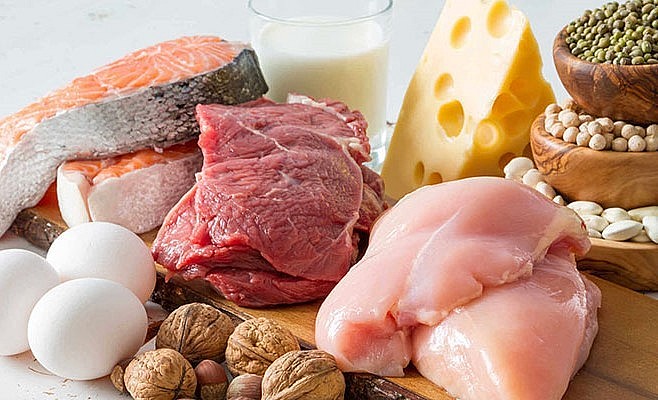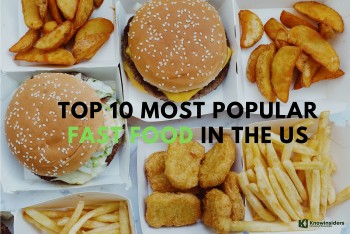What Energy Do We Get From Food
♦ The Role of Energy in the Human Body
 |
| Food produces many types of energy |
In addition, we also use energy to perform conscious activities, from a state of local movement to an active state of movement. All energy needs will be met by food or by the body's stored energy.
Calculating energy needs
Each person's energy needs depend on many factors, including: age, gender, physical activity, muscle mass, body temperature; In addition, it depends on the stage of the body's development, pregnancy and lactation, menstrual period, illness, infection status, quantity of food or sleep duration and content of internal organs. hormones (hormones).
BMR is a measure of how much energy the body needs to perform basic life functions. The metabolic rate peaks when we are young and declines after the age of 10. Because men have more muscle mass, they usually have a higher metabolic rate, and therefore require more energy than women. Because muscle mass declines with age, older people have a lower metabolic rate and need less energy.
The following are examples of energy requirements for different activities in adults:
• People who are sedentary: 11.5kcal/450g body weight/day.
• People with only light exercise: 13.5kcal/450g of body weight/day.
• People who are moderately active and exercise regularly: 16kcal/450g body weight/day.
• People who are active, such as athletes, manual workers and patients in the process of recovery: 18kcal/450g body weight/day.
Calories and Energy
The energy received from food is measured in calories (cal). However, because 1 calorie corresponds to a very small amount of energy, the unit kilocalorie (kcal) is often used. (1 kcal = 1,000 cal).
Each type of nutrient produces a certain amount of energy, for example:
• 100g protein: 400kcal
• 100g carbohydrates: 400kcal
• 100g fat: 900kcal
How does the body process food?
Before they can be used, the nutrients in food must be converted into a simple form that the cells of the body can absorb. This process can take one to three days, starting in the oral cavity and ending with the expulsion of waste from the body.
Food undergoes a chemical transformation as digestive juices break down the complex molecular structures in the food into simpler structures. For example, proteins are broken down into amino acids; fats are broken down into fatty acids, glycerol; and carbohydrates are broken down into simple sugars such as glucose. Vitamins and minerals are microscopic molecules that the body can absorb, so they do not need to be broken down further.
In the small intestine, bile is secreted by the liver to help digest fats; while pancreatic juice helps to further break down carbohydrates, proteins and fats. The nutrients are absorbed into the bloodstream through the intestinal wall. The part of food that is not digested and absorbed will be excreted.
Mouth: digestion begins here. Food is broken down by the combined action of teeth, tongue and jaw muscles.
Epiglottis: This piece of cartilage closes the windpipe when we swallow food.
Esophagus: Food is pushed from the throat to the stomach through peristalsis of the esophagus.
Gallbladder: An organ that stores bile secreted by the liver and releases bile into the small intestine to help digest food.
Pancreas: Secretes digestive enzymes into the small intestine.
Rectal: Stool is kept here before being expelled from the body.
The Anus: Is the end of the digestive tract, responsible for the expulsion of feces.
Stomach: Food stays in the stomach for about 5 hours to be crushed and mixed with gastric juice. In gastric juice contains acids that help destroy bacteria in food and enzymes (*) that help convert proteins into amino acids. The liquid mixture after this process, called the chyme, is passed down to the small intestine.
Salivary glands: The amylase enzyme in saliva moistens food and helps break down starches.
Liver: The liver secretes nearly 1 liter of bile per day and is the storage organ for vitamins A, D, E, and K.
Small intestine: The small intestine is a long tube that includes the duodenum, jejunum, and ileum. Here, food is mixed with more digestive juices. Nutrients, including vitamins and minerals, are absorbed into the bloodstream.
Large intestine: The large intestine contains many intestinal bacteria that help continue to digest the remaining nutrients in food. Water and nutrients broken down by bacteria are absorbed into the bloodstream.
 Top 6 SuperFoods That Can 'Starve' Cancer Top 6 SuperFoods That Can 'Starve' Cancer Cancer affects many people's lives, but eating right can help you reduce your risk. Take a look at these superfoods that help starve cancer and ... |
 Top 10 Most Popular Fast Foods In The US Today Top 10 Most Popular Fast Foods In The US Today Which brand you think of when you talk about fast food? Is that Mc Donald’s, Burger King or Subway? Check out top 10 most popular ... |























